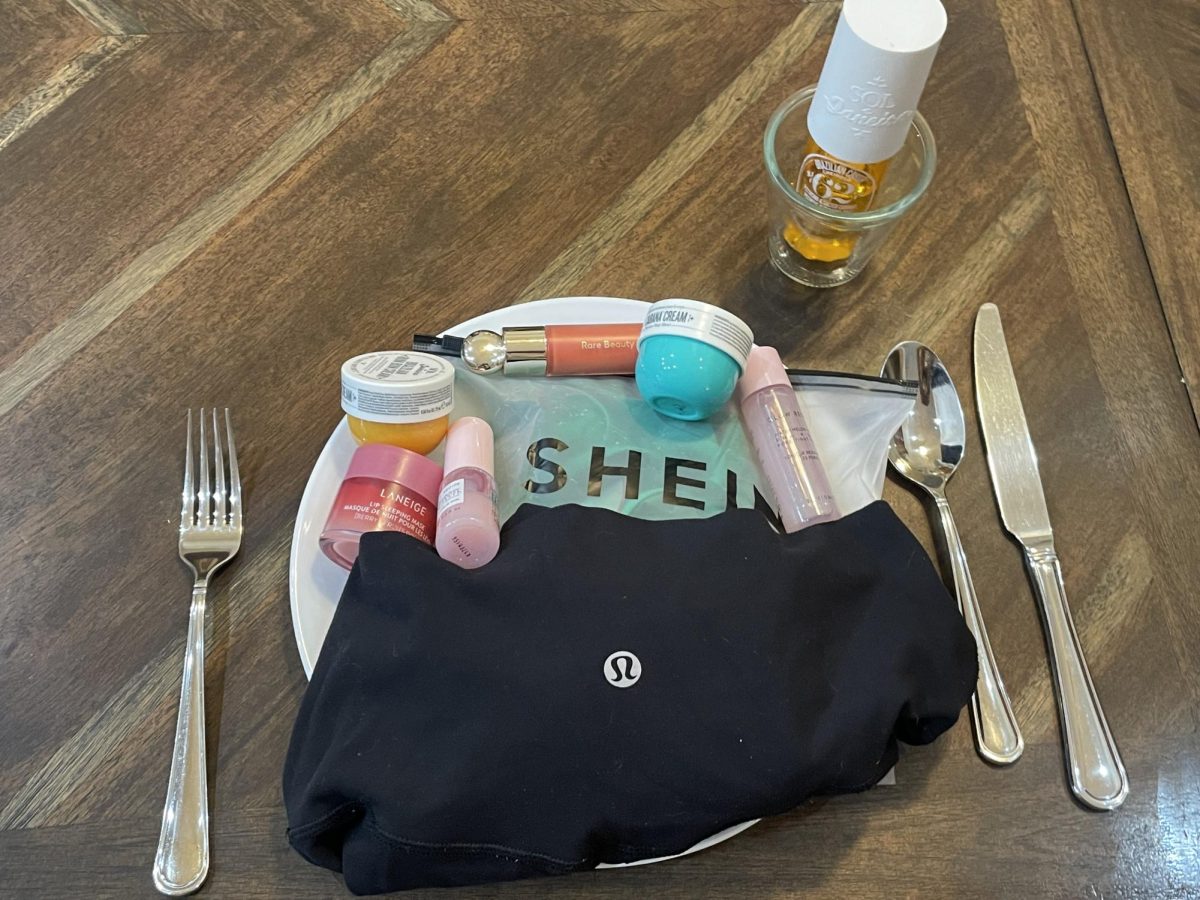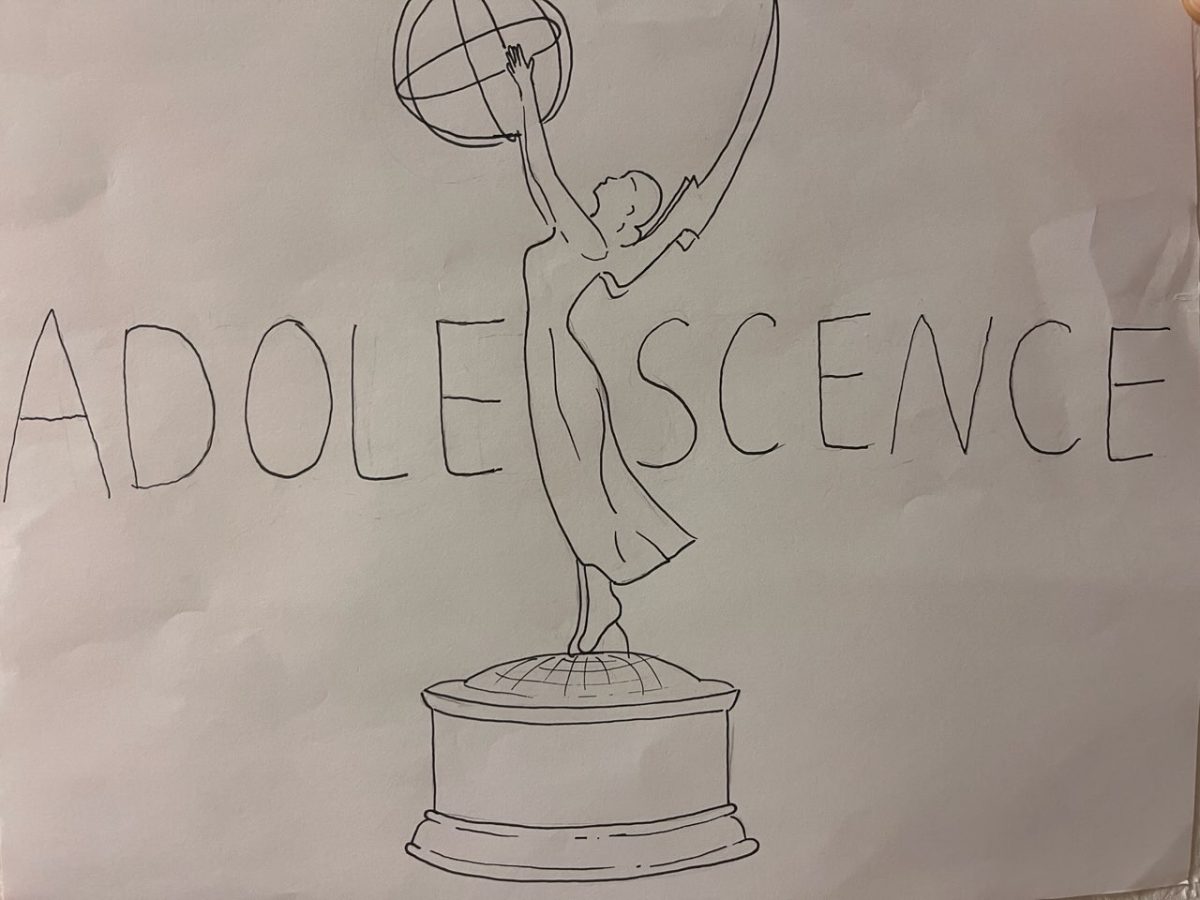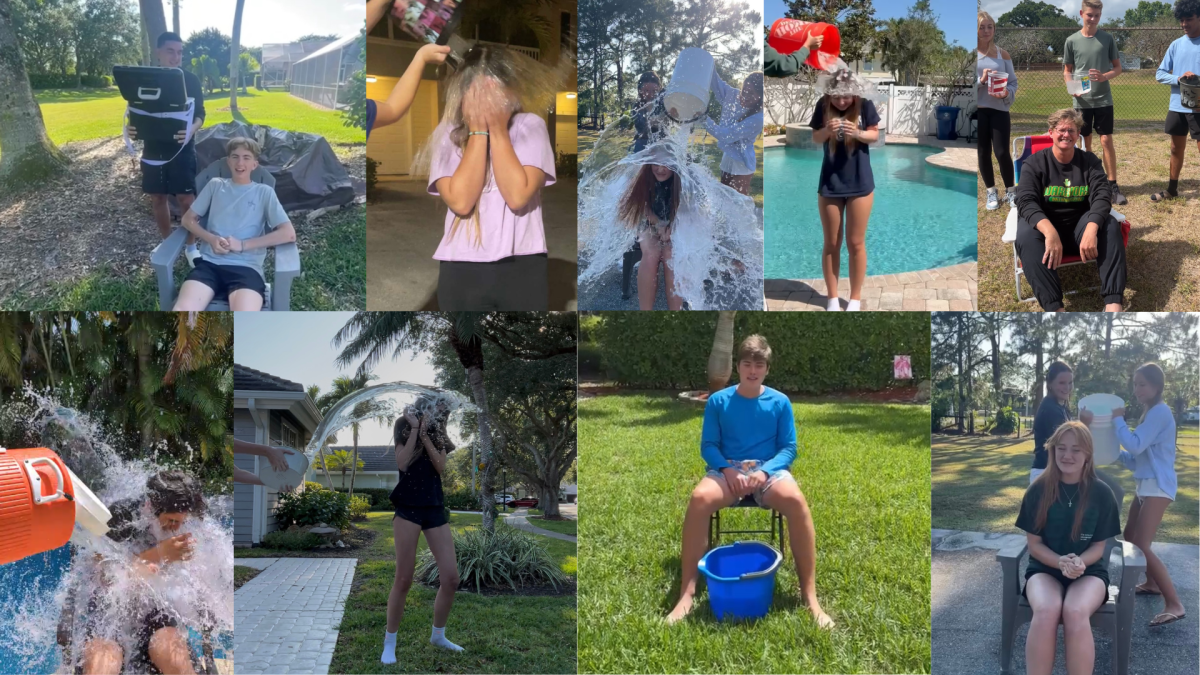Do you often find yourself buying things you see online and don’t necessarily need? It costs you money, but also even exposure can cost you a variety of risks. Advertisement companies are constantly showing us new trends, identities and beauty standards to follow.
Buying new trendy products that are marketed in online communities is a way to temporarily give younger teens a sense of inclusion and instant gratification. These ads, whether on TikTok or instagram reels, play into many teenager’s desperate desire to fit in. But when these communities revolve around the consumption of new products and following microtrends, how much money will we spend to become satisfied?
Advertising companies often target younger girls by creating beauty standards to encourage them to buy their products. People may not have been insecure about certain features, but marketers make them feel self conscious and embarrassed to create profit.
An example of this can be seen in Gillette’s 1915 ad campaigns for a women’s razor, where they focused on making women feel shameful for having armpit hair by calling their underarm hair an “embarrassing personal problem.” They create the problem, and then provide a paid solution; once you’ve used their solution then you’re made to feel as though you’ve solved the “problem.”
This is also highly relevant with tanning culture with the use of tanning beds and self tanner, making a person feel good by helping try them fit an ideal image of being tan year round. This ends up in reliance on the product and the ‘good feeling’ associated with being tan by repurchasing the tanner. In 2016, Ithaca College did a psychological study, which proved indoor tanning was linked with addictive and psychiatric symptoms and frequent tanning showed markers of tanning dependance, which is addiction.
“I’m really white, not really white but I see other girls with perfect tans and their freckles out in the winter and I look white, transparent. I just use tanner to make myself happy,” Lexie Macisaac, junior, said.
Profiting off of insecurities is still relevant today especially through the use of social media platforms. A new TikTok trend of “legging legs’ ‘ is creating a new insecurity, and marginalizing it to make profit off of new types pants and leggings. Influencers also get you to buy in discreet and disguised ways in forms of short videos. Short trends such as ‘get ready with me’, ‘shopping haul’, ‘girl therapy’, ‘skin care routine’ and ‘outfit of the week’ videos are fun, but mostly all are hidden ways of marketing.
In an Insider 2023 study it was reported that 30% of every 500 TikTok videos are ads. Marketing is hidden in videos that showcase an array of items: clothes, skincare, makeup, hair care, shoes and jewelry. Multiple videos of the same product may end up on someone’s feed and condition them into buying it after seeing it everywhere online.
“I definitely do feel influenced by social media to buy certain products like Stanley Cups or Dior lip Oils. I also like just being myself and using the stuff that I like because I know it works, and usually it’s a less expensive product,” Carolina Bonasera,sophomore, said.
With the increase in technology everywhere, kids are being exposed to new social media standards of living, beauty, health and body image. Kids are blindly following consumption culture by buying trendy items such as Lululemon, Stanley Cups, Drunk Elephant and Sephora products. Generation Alpha holds high purchasing power, especially in beauty sales. According to a Circana 2023 spending survey, tween prestigious skincare spending averaged 19% higher since years prior.
“I feel it’s very overlooked on with little children trying to grow up faster than they should. I feel partly that little kids are growing up so quickly due to access to electronics. Instead, parents should be teaching their kids to read books and not go to Sephora and buy overpriced makeup,” Jadyn Schmiedl, junior, said.
All these items may tie into a category of a consumer-based ‘aesthetic’ or ‘micro identity’. For example: “office siren” – with bayonetta glasses and business casual, “clean girl” – slick back bun and golden jewelry, “preppy girl” – Lululemon and Golden Gooses. There are highly distinct aesthetic-based communities in Fla. and show prevalence in South Florida. Lululemon, Stanley Cups, UGG slippers, Drunk Elephant bronzing drops and gold jewelry are all cute and fun styles seen mainly in Jupiter.
“I feel Jupiter High School has a certain style most people wear. Although I like being more comfy I usually wear trendy clothing that most people in Jupiter High wear. Being in somewhat of a wealthy town, sometimes there is pressure to own trendy and stylish items in my closet,” Schmiedl said.
Though these trends of styles come and go, many people rebrand their whole identity by buying the products to fit the aesthetic’s image. The majority try on these aesthetics like costumes, calling them “eras” and having a sense of identity tied to the products and using them as a way to communicate to other young people their “persona.”
There is a fetishization of being deviant from the norm– self-deeming as special based off of their unique form of media consumption. Many people with this mindset demean others as “too normal” and incapable of understanding them, solely because others are not in their specific online echo chamber.
Aesthetics may seem fun and fashionable, but they are evolving into fully fledged identities. From giving idols to look up to, bold fashion, niche room decor, music taste, mood, lifestyle, to mentalities and slang to adopt. It becomes rooted into a whole individuality and a community to connect to from subgroups to exclusive abstract identities.
This consumer culture makes lower class individuals feel like they’re losing touch with the community if they don’t own “trendy,” “aesthetic” products. Lower income families see these trends online and may experience material and social deprivation because of the exclusion they might be facing from consumer culture. Humans crave community and a sense of belonging- not products, but these communities are based on products.
However, not dressing a certain way or owning certain items does not prevent you from being accepted and loved because of the mainstream styles being portrayed in person and online to you. It does not prevent you from fitting in a community or finding friends. There is lots of pressure to be conditioned into a trend.
According to the U.S. Bureau of Economic Analysis, in the last three months of 2023, personal citizen consumption expenses made up 68% of the Gross Domestic Product (GDP) of the U.S. economy. How can we fix the problem? Think before you buy. Quality over quantity. Do I really want this or am I just being influenced? Do I have something similar?
“Definitely think before you buy, sometimes [a product] looks interesting and tempting to purchase, but it is a waste of money,” Schmiedl said.









Anonymous • Sep 23, 2024 at 11:47 pm
Such a well thought out and written article, really highlighted the overconsumption problem that is happening globally. Great job!
Olivia • Sep 23, 2024 at 12:30 pm
AMAZING ARTICLE! I am so glad this one got published, it was one of my favorites! Love and miss you guys, and keep up the good work!